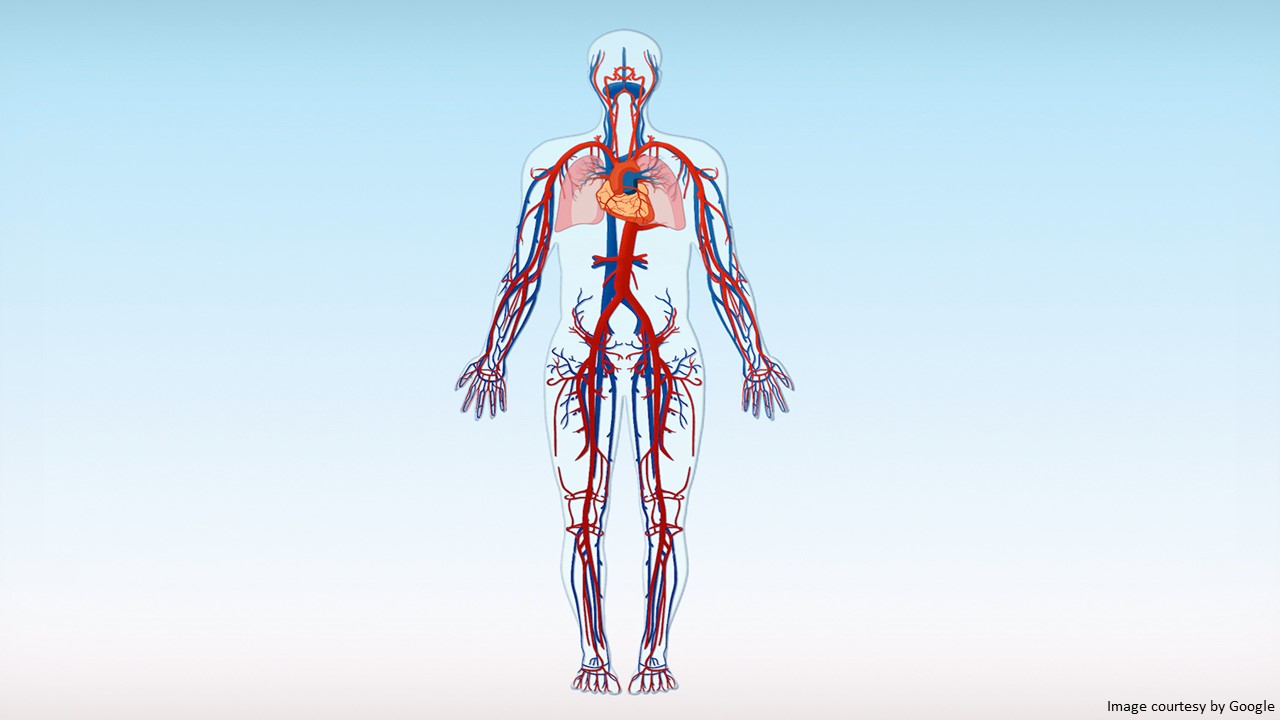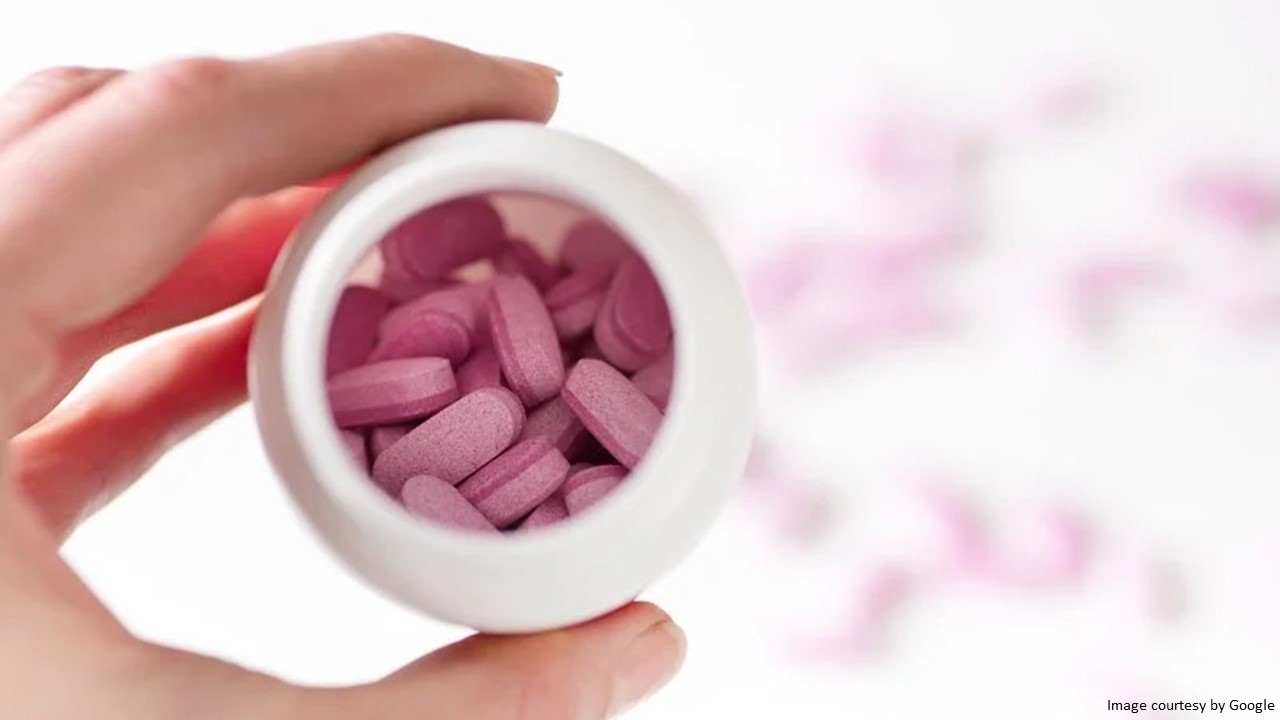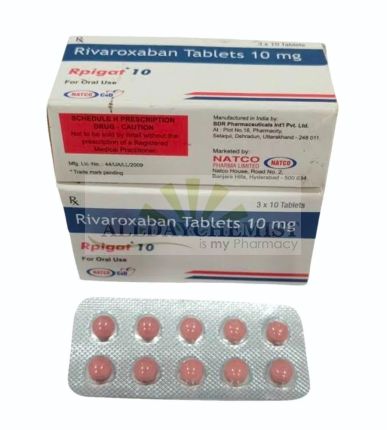Rpigat contains Rivaroxaban, a type of medication known as an anticoagulant. It effectively makes your blood flow through your veins more easily. This reduces the risk of developing a blood clot.
Rpigat tablets 10 mg is a prescription drug used for the:
-
- Blood clot stroke prevention in adults who suffer from atrial fibrillation that doesn’t occur due to heart valve problems. Atrial fibrillation causes the heart not to beat the way it should. This contributes to blood clot formation, which can travel to the brain, ultimately causing a stroke or other parts of the body.
- Treatment of blood clots in the veins of your legs (deep vein thrombosis) or lungs (pulmonary embolism).
- Risk reduction of blood clots from developing again in adults who continue to be at risk of developing pulmonary embolism and deep vein thrombosis
- After treatment for blood clots for at least six months
- Blood clot prevention in the legs and lungs of adults who have just had knee or hip replacement surgery.
- To prevent blood clots in adults hospitalized because of an acute illness and after discharge who are at risk of developing blood clots. Because of the reduced or almost lost ability to move around and other risks for getting blood clots and those who do not have a high risk of bleeding.

Rpigat is also prescribed with low-dose aspirin for:
-
- Reducing the risk of serious heart problems, stroke, and heart attack in adults with coronary artery disease (a medical condition where the blood flow is reduced or blocked completely).
- Reducing the risk of a sudden reduction in blood flow to the legs, heart issues, or stroke in adult patients who have peripheral artery disease (a serious health issue where the flow of blood is reduced) and includes adults adult patients who have just undergone to improve blood flow to the legs.
Rpigat is given to children:
For the treatment of blood clots and reduction of risk of blood clots from happening again in kids from birth to less than 18 years, after getting at least five days of treatment with:
-
- Injectable drugs are prescribed for blood clots.
- For preventing blood clots in children two years older with congenital heart disease after a certain procedure.

Usage Instructions
You will usually take Rpigat once or twice daily. Take the medicine just after you have eaten a meal or snack. Ensure you take it with food to help your body absorb the whole dose. Rpigat comes a 2.5 mg, 5 mg, 10mg, and 20 mg tablets. The dose usually depends on why you are taking it. The usual dose in adults. The usual dose in adults for atrial fibrillation treatment is 20 mg per day, but your healthcare provider might prescribe a lower dose if you have kidney problems and are at high risk of bleeding.
The usual dose for deep vein thrombosis and pulmonary embolism is 20 mg daily. You may be advised to take a dose of 15 mg daily for the initial weeks of taking this blood thinner if you have a kidney disorder and are at high risk of bleeding. Your healthcare provider may prescribe a lower dose.
The usual dose after an operation to replace a hip or knee joint is 10 mg daily and 5 mg daily after a heart attack or for unstable angina.
If you are using Rpigat to treat blood in the veins of the legs or lungs, you may be required to take it twice daily for the first few weeks. You need to swallow the pill with a drink of water. If you find it tough to swallow the pill, you can crush the pill and mix it with water or apple sauce. Swallow this mixture, then eat some food straight away.
The need to take Rivaroxaban either for a short or a long period will depend on why you are taking it. If you have undergone a knee or hip joint replacement, you will probably advised to take the pill for 2 to 5 weeks. For blood clots in veins of the legs or lungs, you will usually take Rivaroxaban for at least three months.
Summary
Rpigat, 10 mg tablets, treats and manages venous thromboembolism (a condition that develops a blood clot forms in a vein) as a postoperative thromboprophylaxis for patients undergoing orthopedic surgery to prevent stroke in patients with non-valvular atrial fibrillation and recently has received approval as an additional medicine for secondary prevention of acute coronary syndrome (a term that describes a range of conditions associated with sudden, reduced blood circulation to the heart and peripheral arterial disease (a condition where narrowed arteries reduce blood flow to the arms and legs). For best results, use it under the doctor’s guidance.
Also Read: Tiromel 25 mg: Dosage, Benefits, and Side Effects
admin
Latest posts by admin (see all)
- What is Triluma Cream? Uses, Benefits, and How It Works for Skin - December 26, 2024
- What Causes Dark Spots? Understanding the Science of Hyperpigmentation and How Skin Lightening Products Help - December 26, 2024
- Tretinoin Gel vs. Cream: Which Formulation is Right for Your Skin? - December 20, 2024



